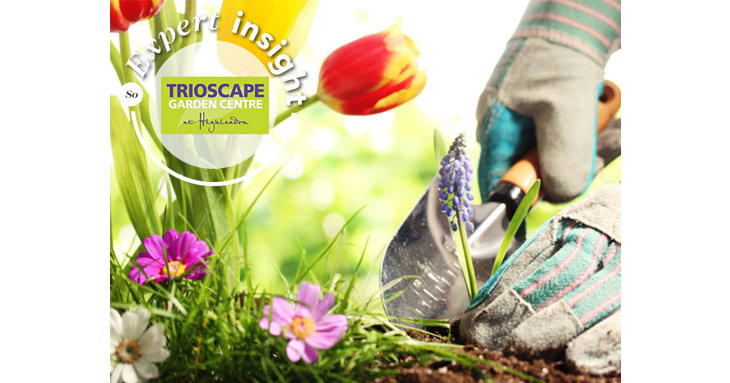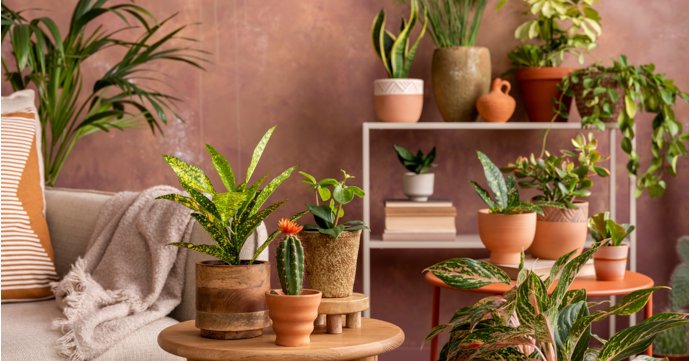With winter drawing to a close, it’s time to get your garden ready for the arrival of spring – heralding an exciting new season that sees gardens come back to life after the chilly months.
The expert team at Trioscape Garden Centre in Newent have plenty of tips for what to do in your garden during March, April and May, with advice for amateur and seasoned gardeners alike.
If you need to stock up on bulbs, plants, accessories or tools, the independent Forest of Dean garden centre has all your horticultural needs covered.
March
Planting
March is a busy month with lots of hard work. If possible dig in a layer of compost or well-rotted manure into your beds. A general purpose fertiliser like pelleted chicken manure or fish, blood and bone can be worked in as well.
Summer-flowering bulbs such as gladiolus and lilies can be planted into beds and containers.
Snowdrops ‘in the green’ can be planted now for flowering next year.
Now is the time to plant herbaceous perennials and lifting and dividing existing perennials helps improve their strength.
Flower seeds should be sown so they are ready for planting out in June, hardy annuals can be sown directly into the ground.
Prune early-flowering clematis once they have finished flowering and summer-flowering clematis before they start growing.
Dead head daffodils but let the leaves die back naturally.
Grow your own
Early potatoes can be planted outside or use a potato growing bag, while asparagus crowns can be planted now, onion, shallot and garlic sets can also be planted as long as the ground is not frozen.
Vegetable seeds such as carrots, radishes and lettuce can be sown under cloches, and cover strawberries with a cloche to encourage earlier fruiting.
Fruit trees such as apple and cherry can be planted in sheltered spot, while blueberry plants will appreciate a feed of ericaceous plant fertiliser.
In the greenhouse
Move plants from the greenhouse to a cold frame if possible to allow them to adjust to cooler temperatures.
Maintenance
Begin weeding as the weather warms – weeds are more easily controlled if removed young.
Build a compost bin before the growing season gets underway.
Start to look out for slugs as it warms up, as new growth tempts them. Organic slug killers such as Vitax Slug Gone Wool Pellets are available.
April
Planting
Divide hostas before they come into leaf and continue to plant herbaceous perennials.
Now is the right time to give support to any plants that need it so they can grow up through them.
Tie in climbing and rambling roses to their supports as well as clematis and honeysuckle.
Prune forsythia as soon as they have finished flowering, cutting back to strong young shoots.
Direct sow hardy annuals outside or in pots or modules.
Check that your container plants are not drying out – warm weather will quickly affect soil moisture levels.
Grow your own
Harvest asparagus spears when they are no more than 18cm tall.
For quick and easy pea supports, push some twiggy sticks around your pea plants now.
Thin your carrot seedlings to achieve good-size carrots – do this in the evening when fewer carrot flies are around.
Many crops can be direct sown into the ground now including parsnips, cabbages and radishes.
Plant out strawberry beds, making sure you enrich the soil first with plenty of well-rotted manure. Place cloches over your strawberry plants for earlier crops.
Protect your fruit blossom from late frosts by covering them with fleece on cold nights.
In the greenhouse
If you haven’t already, give your greenhouse a thorough scrub with hot soapy water to get rid of pests and diseases and to let more light in.
Start to sow tomato seeds indoors, ready to plant out after all risk of frost has passed. If you’re struggling for growing space buy ready-grown tomato plants.
Maintenance
Keep on top of weeding now the weather is warming up. Run a hoe through beds and borders. Apply weed killer to perennial weeds in paving and patios.
Look out for signs of pests and diseases; early prevention is easier than curing an infestation.
Make sure bird baths and bird feeders are kept topped up to encourage birds to your garden.
May
Planting
Thin out drifts of hardy annuals and harden off half-hardy plants by leaving them outside during the day and bringing back under cover at night for seven to 10 days before planting outdoors.
Harden off dahlias and tender exotics such as canna for planting as soon as the risk of frost has passed.
You can still divide herbaceous perennials now to improve their vigour and create new plants.
Trim back spreading plants such as aubrieta, alyssum and candytuft after they have flowered to encourage fresh new growth and more flowers.
Don’t be tempted to cut down or tie up the foliage of spring-flowering bulbs, let them die down naturally.
Prune spring-flowering shrubs after flowering and trim lavender plants now, cutting off any old flower heads and about 2.5cm (1 inch) of the current year’s growth.
Give your container plants a balanced liquid feed every two to four weeks to promote healthy growth.
Plant up pots and baskets of summer bedding and harden off before placing in position. In cold areas wait until June.
Grow your own
Continue earthing-up potatoes.
Harvest rhubarb, picking only a third of the total amount of stems.
Thin out direct-sown vegetables such as spinach, carrot and lettuce seedlings then water the rows well.
Harden off outdoor tomatoes, courgettes and pumpkins for planting early next month.
Plant out brassicas and leeks to their final positions.
In the greenhouse
Plant glasshouse tomatoes in beds or growing bags.
Ventilate glasshouses on warm days and use blinds or apply shade paint to avoid large fluctuations of temperature.
Damp down your greenhouse on hot days to increase humidity and deter red spider mites.
Hang fly traps throughout the greenhouse to monitor levels of whitefly, thrips and other pests.
Maintenance
Erect netting around your soft fruit plants to prevent birds eating your crop.
Harden off half-hardy bedding plants to acclimatise them to outdoor conditions.
Continue pricking out and potting on seedlings and cuttings.
Start to closely inspect your plants for pests and diseases – early prevention is easier than curing an infestation.
Look out for signs of blackspot on roses. If discovered, blackspot can be treated with a systemic fungicide.
Continue to weed beds and borders to prevent competition for water and nutrients.
For more information, see Trioscape Garden Centre, call (01452) 790550, email gardencentre@trioscape.co.uk or visit trioscape.co.uk directly.




















